Houses require maintenance. How much and how often depends on the design and its surroundings. They also require occupants - in my brief experience at least, they degrade much faster when they’re left cold and empty than when someone lives there, even if that someone doesn’t fix things. Weather, encroaching water, mold, ice, and animals can all cause compounding damage surprisingly fast.
I think of the solarpunk society I've been depicting as being post-postapoclyptic. They’ve been through the worst of the climate crisis, wars, plagues, and all kinds of shortages, and they’re trying to rebuild better.
In some of my previous postcards, I’ve tried to imagine what the rural communities I grew up in would look like transformed into a modern version of how they looked a hundred years ago, with denser villages, trains, and wide stretches of forests and farmland in between. They were set up this way back when because it was practical for people who walked or relied on horse carts to get around day-to-day, and who traveled to use a boat or a steam train for a longer trip. A solarpunk society that doesn’t want to rebuild the infrastructure(s) to produce and maintain personal vehicles, fuel them, and to drive them on, might have to look pretty similar out here.
But what happens to the houses and developments spattered across the land between those villages? Every road with a house a quarter mile from its nearest neighbor, now miles from those hubs of public transit? In a society where public transit is effective, and cars are rare, I think a lot of roads will degrade pretty quickly. They already need tons of maintenance, and that’s with people using them every day, totally dependent on them, grudgingly agreeing to pay for it. It’s not uncommon to live thirty minutes or an hour from your grocery store today, but on badly broken roads, that kind of travel is going to be more difficult and costly. Some people will do it, heck, some will have held out through all the bad times and will stay no matter what else changes. But I suspect a lot of houses will have been abandoned a long time ago.
There’s tons of embodied carbon stored in those structures. In their carefully-refined materials, their transportation, and in the act of construction. Some of those materials might be very difficult to produce for a society that carefully watches its externalities and seeks to do as little harm as possible. And the longer they’re left abandoned, the more they’ll degrade. The structures will become unsafe, the materials will rot or break, or become inaccessible, and in some cases, they’ll pose environmental risks as fuel tanks rust out, chemicals escape their storage, or damaged structures catch fire (even with the powerlines cut upstream, abandoned solar panels or poorly-isolated generators backfeeding into the grid might allow for damage to an abandoned house to cause a fire). This is especially true with modern buildings, particularly the kind of McMansion featured in the scene, with their heavy reliance on petro-products like “structural” foam columns and facades, which will go up like a struck match in the next wildfire.
In some cases, old buildings could be put back into use. Perhaps they’re nearby something the rebuilding society needs. Maybe one development will make for a good farming community, and another the barracks of a logging camp. Maybe one near a river can support trade or fishing. But there will be others that are simply not very useful. They were practical enough for semi-suburban life when gas was cheap, cars were plentiful, and roads were maintained. But in a world where most people have other priorities, live in closer communities, use public transportation, and aren’t interested in rebuilding a car-centric world, these houses don’t make sense. And of course there's the ones in unsafe locations (flood plain, unstable/eroding cliff, etc) where they won’t last no matter what.
To that society, deconstruction might be a very practical answer to both the long term threat posed by these structures and to their own building material needs.
Deconstruction is an alternative to home demolition. It means carefully dismantling the constructed components of a house so the materials can be salvaged and reused. Materials are typically removed in the opposite order in which they were installed, to maximize reuse.
By carefully disassembling these structures and hauling the materials back to their communities, they can build and expand for a much lower overall cost (both environmentally and in resources harvested from the world) while removing potential toxin or fire threats. And by filling in their cellarholes and replanting, they can rewild developed land, build better habitats, and restore their local ecosystems.
On top of that, even buildings picked over by looters may be full of usable stuff - furniture, dishes, cooking tools, hardware - which a society with an interconnected library economy could use to meet its needs without producing new items.
So that’s what I’ve tried to depict here, a deconstruction crew carefully disassembling old world structures so that everything, from the windows to the metal roof panels, to the cabinets to the stick framing itself, can be reused elsewhere rather than produced new.
They’ve been working from left to right in this scene, taking each house apart in reverse order to how it was built. Much as with construction, this would require different crews of specialists: inspectors, roofers, carpenters, electricians, plumbers, and others who can safely remove resources without doing unnecessary damage. Once a crew finishes their part of a building, they’d hopefully be able to move on to another one nearby.
They’re also replanting/rewilding the old backfilled foundations, something that would certainly help with breaking up the concrete (eventually). Roots are great at that.
I’m not sure if it’d be worthwhile to use concrete saws to cut at least some of the concrete foundations into construction blocks. It’d certainly help with restoring the site quicker, and it’d be a low-ish carbon source for concrete blocks, but the tradeoffs in labor, transportation, and power for the saw might not be worth it. In that case, they’d probably crack it up with a jackhammer before filling it back in.
There’s a lot of vehicles in this scene, so I should emphasize that these aren’t daily drivers. These are equipment used to haul work crews and construction materials on fairly short trips.
All the big trucks in the scene are old internal combustion engine vehicles converted to run on woodgas. I imagine they burn a lot of the wooden construction debris which were otherwise too small or damaged to be worth salvaging. Perhaps some trucks are even set up with plastic de-refineries and are able to use astroturf lawns, broken plastic siding, or “structural” foam facades as fuel on their trips. This isn’t perfect: it still produces pollution and releases CO2, but if the goal is to salvage as much material as possible, and to prevent it from burning pointlessly in the next wildfire, I could still see an aspirational society accepting that use of it.
As a bonus, woodgas vehicles are often used as generators, so they may be able to serve that role part-time on-site, powering lights and air pumps for confined spaces like basements, and even certain tools. Otherwise they’d probably use portable solar panels.
The other (smaller) vehicles are electric minitrucks and rickshaws.
I imagine that the workers are a mix of specialized crews brought in by the larger community for the scheduled deconstruction, and local volunteers who are working for trade in recovered materials. I imagine a lot of the cargo bikes, Chinese wheelbarrows, rickshaws, and minitrucks belong to them. I figure in place of real roads, the really small villages and isolated homesteads maintain a surprisingly dense web of rough trails suitable for mountain bikes or snowmobiles, which connect to all their neighbors.
Last art thoughts: I have another scene of a golf course and its surrounding McMansions turned into a solarpunk intentional community that I’d like to do, but the scope on that one is big enough it’ll be awhile before I can get to it. At this point, I’m confident I’ll make it though. McMansions, with their pointless, wasteful scale, their cheap construction, their reliance on petro-product materials, and their often vain attempt to spend their way to classiness, seem kind of like the antithesis of solarpunk design to me. Golf courses with their endless, expensive-to-maintain grass monocrop hold a similar, though less severe place in my mind.
If you read all that, thank you! And if you’re a person who owns a building in real life, and you’re thinking about doing some renovations, please consider reaching out to your local chapter of Habitat for Humanity or another group who will do deconstruction, rather than just smashing everything up and throwing it away.
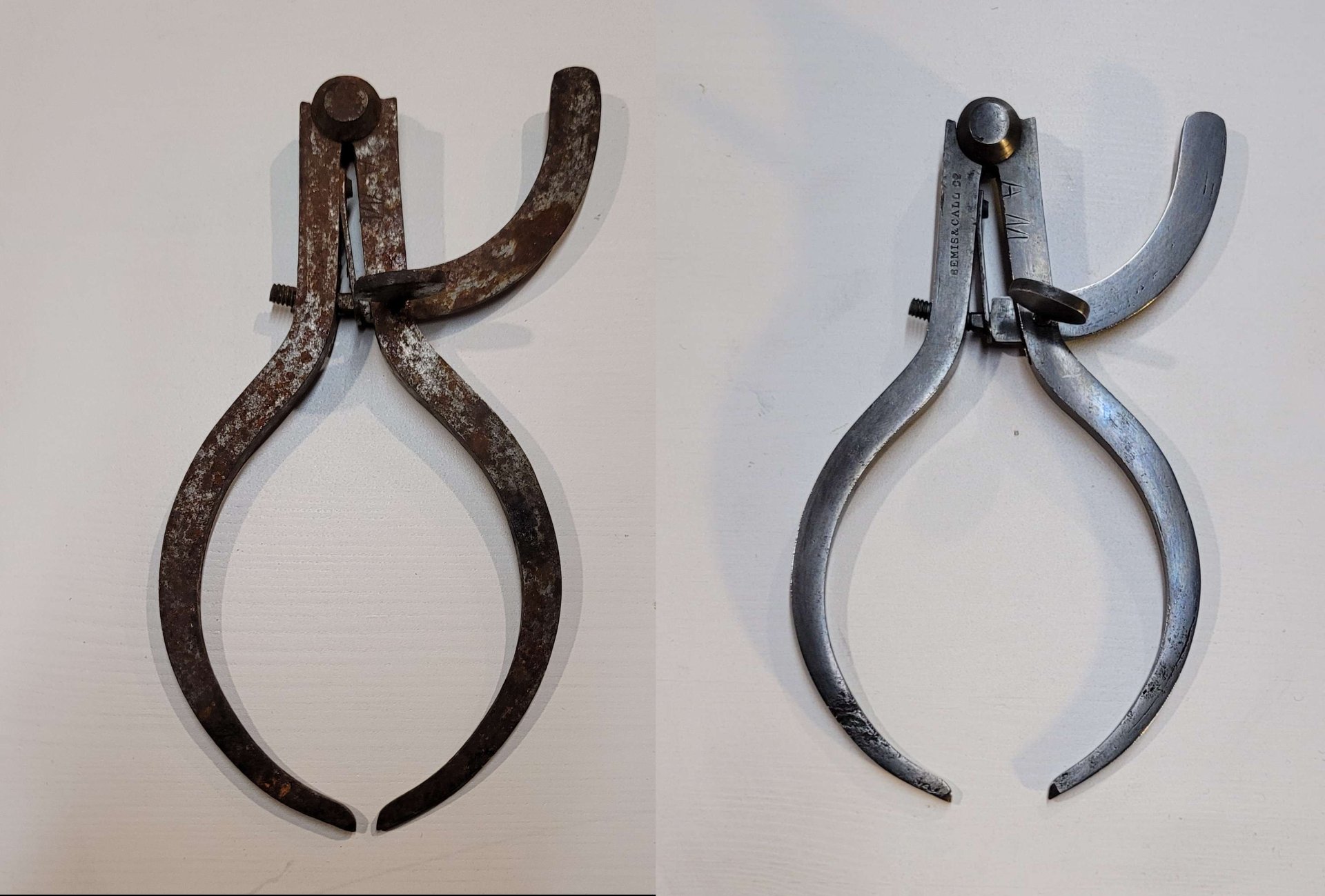


 The calipers, straight out of the evaporust. You can already see some text which was hidden before, along with the initials AM from a previous owner.
The calipers, straight out of the evaporust. You can already see some text which was hidden before, along with the initials AM from a previous owner. The calipers with only one side sanded.
The calipers with only one side sanded. Here's some funny nicks up near the joint on one side. I wonder what caused them. And the previous owner's mark on the right side, AM. This is a big part of why I love old tools. I love the history they carry with them, even if I don't know all of it.
Here's some funny nicks up near the joint on one side. I wonder what caused them. And the previous owner's mark on the right side, AM. This is a big part of why I love old tools. I love the history they carry with them, even if I don't know all of it. Looking better, but still a ways to go. I was surprised to find that there weren't any markings on the little distance arm. I'd been expecting to find little angle tickmarks or something, maybe even printed numbers, but there weren't any to be seen after the evaporust, or once I started gently sanding off the remaining rust and the black crud evaporust leaves behind.
Looking better, but still a ways to go. I was surprised to find that there weren't any markings on the little distance arm. I'd been expecting to find little angle tickmarks or something, maybe even printed numbers, but there weren't any to be seen after the evaporust, or once I started gently sanding off the remaining rust and the black crud evaporust leaves behind.



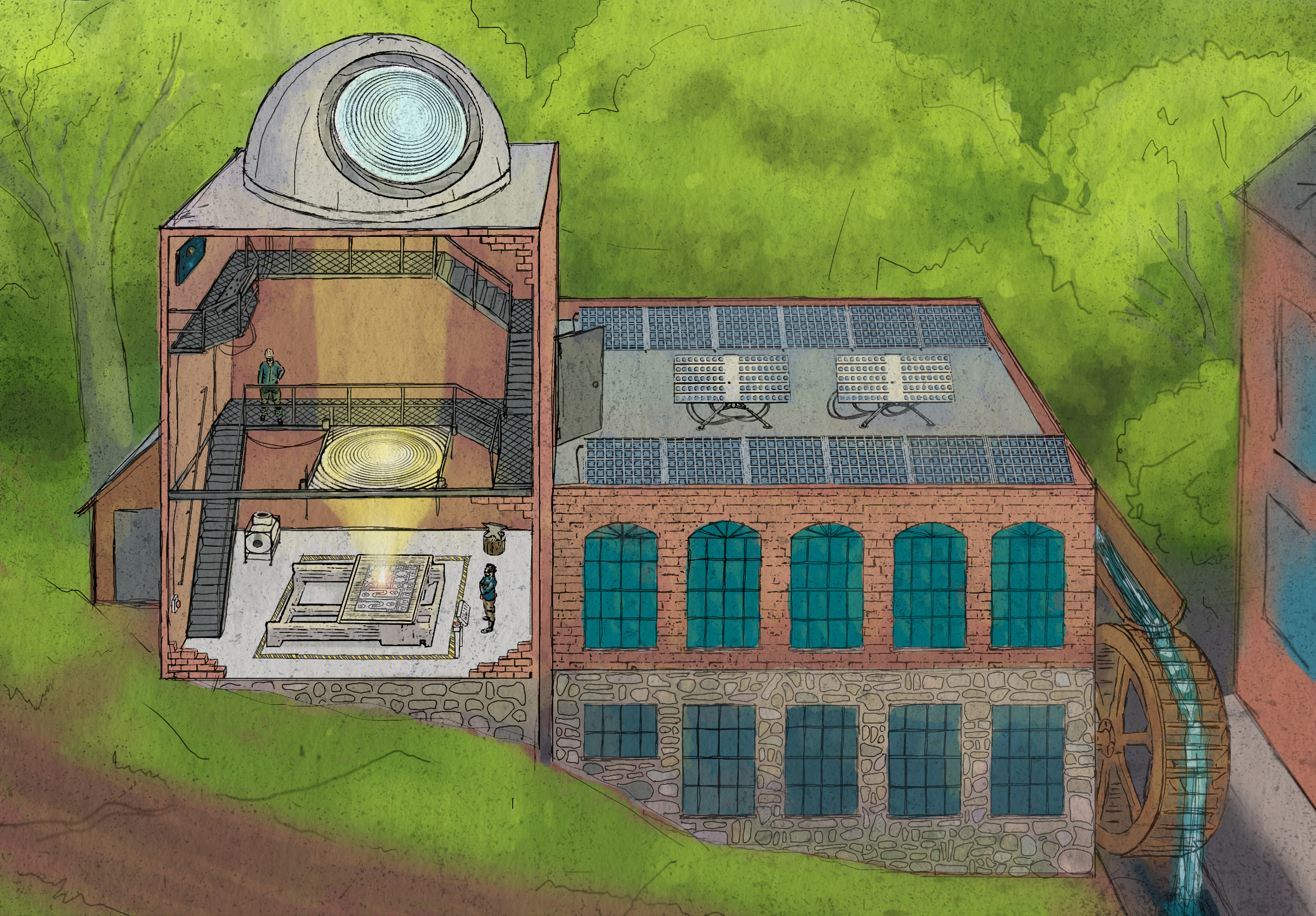

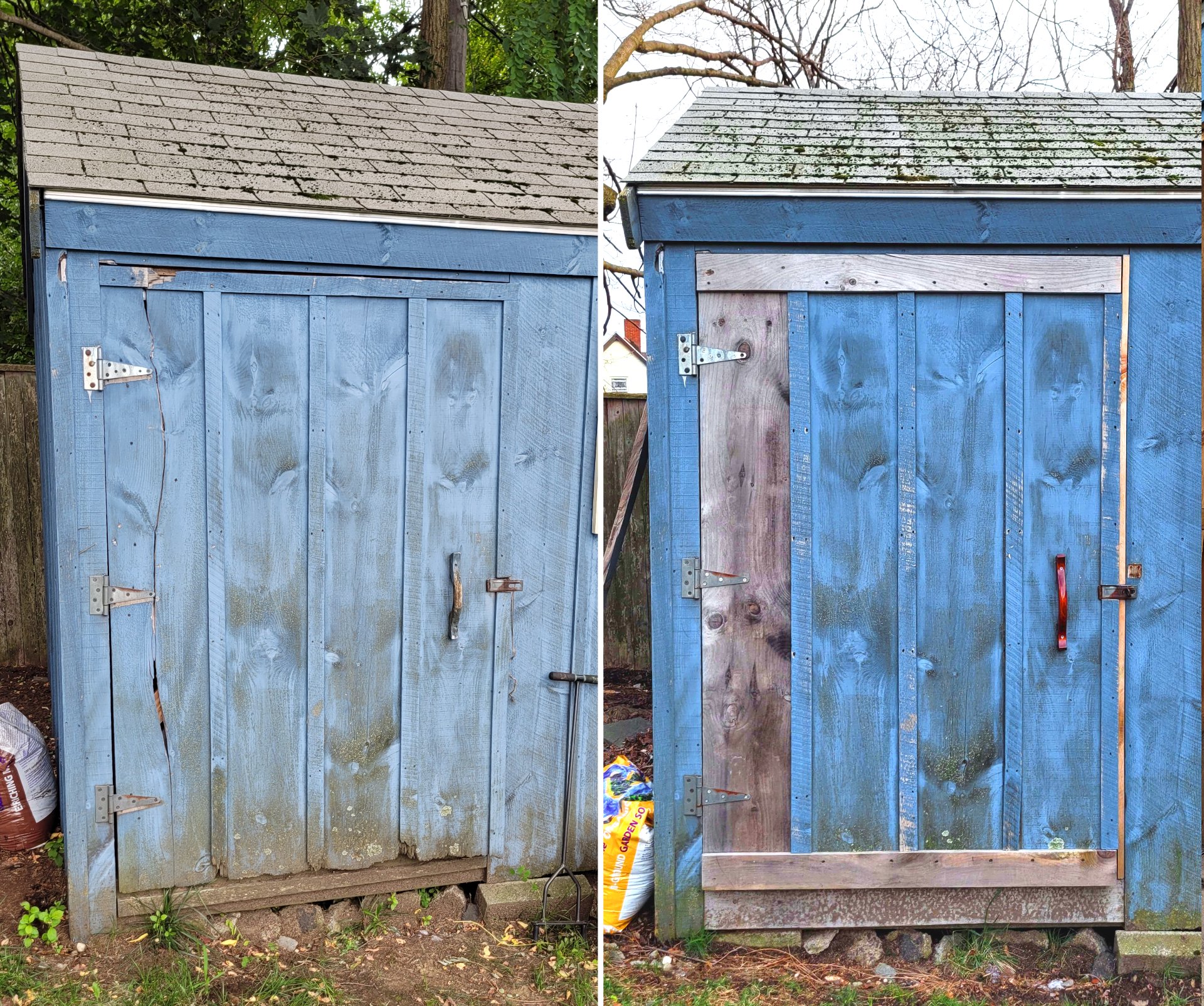
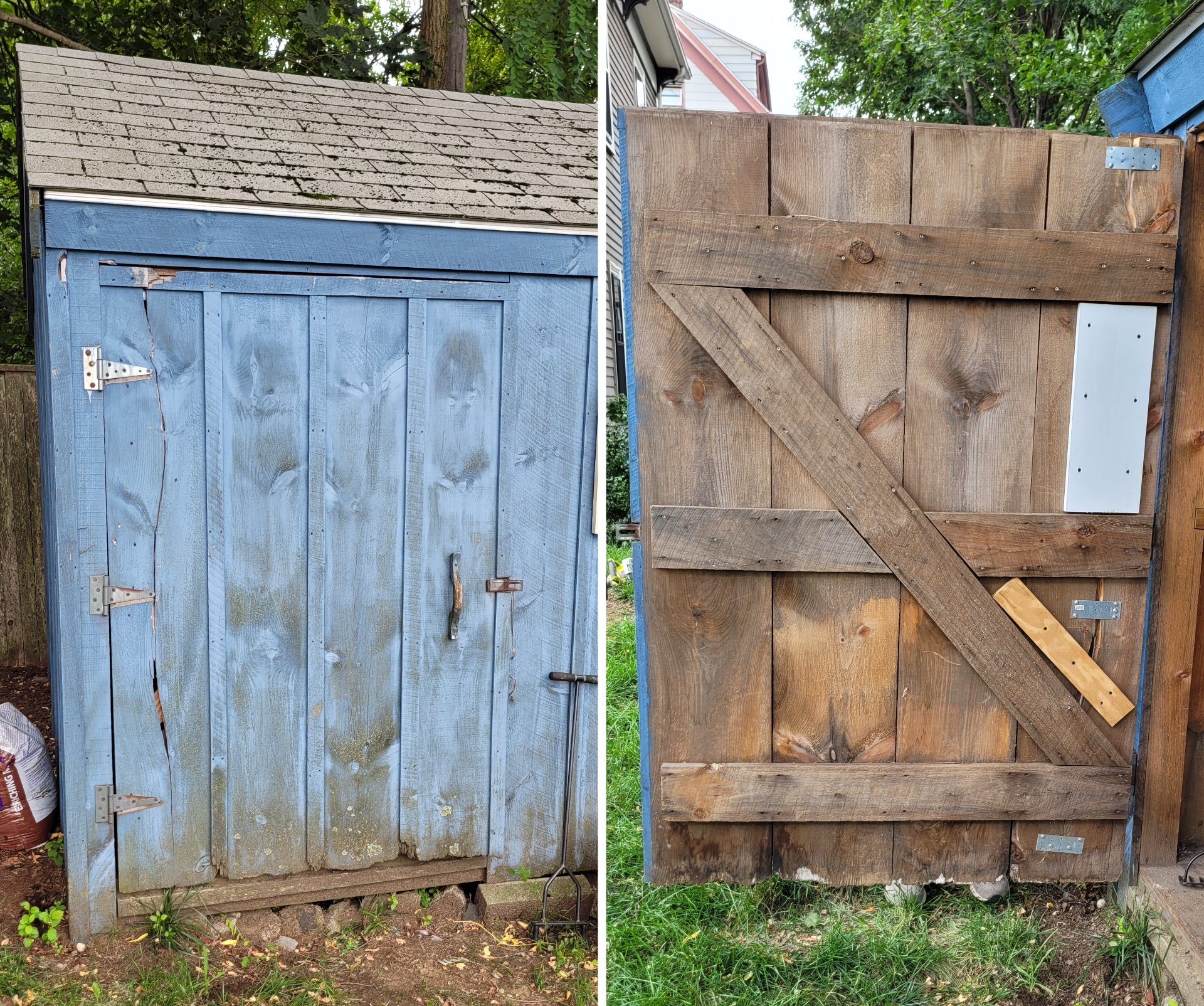

 (Dog helping hold down the door)
(Dog helping hold down the door)






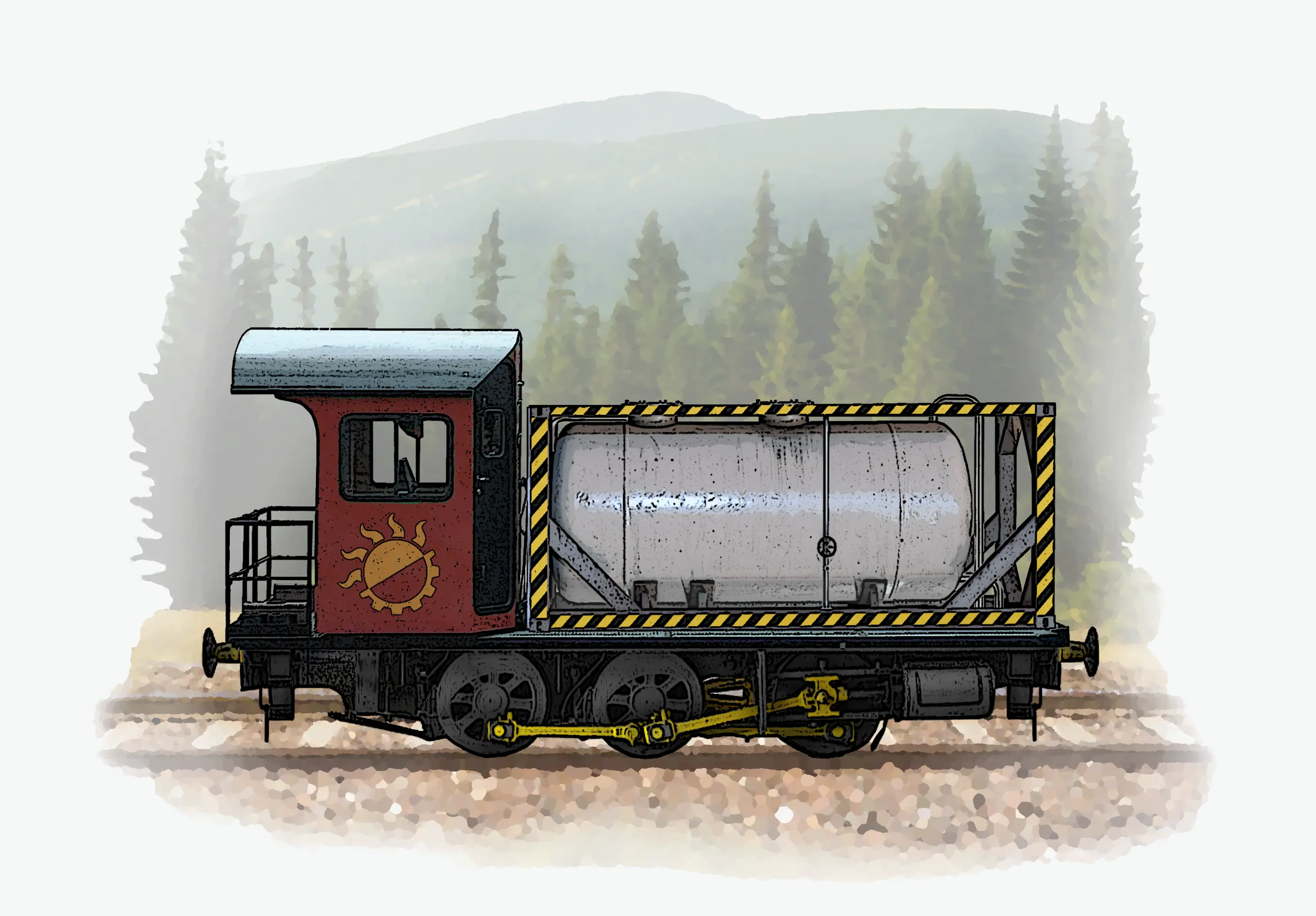
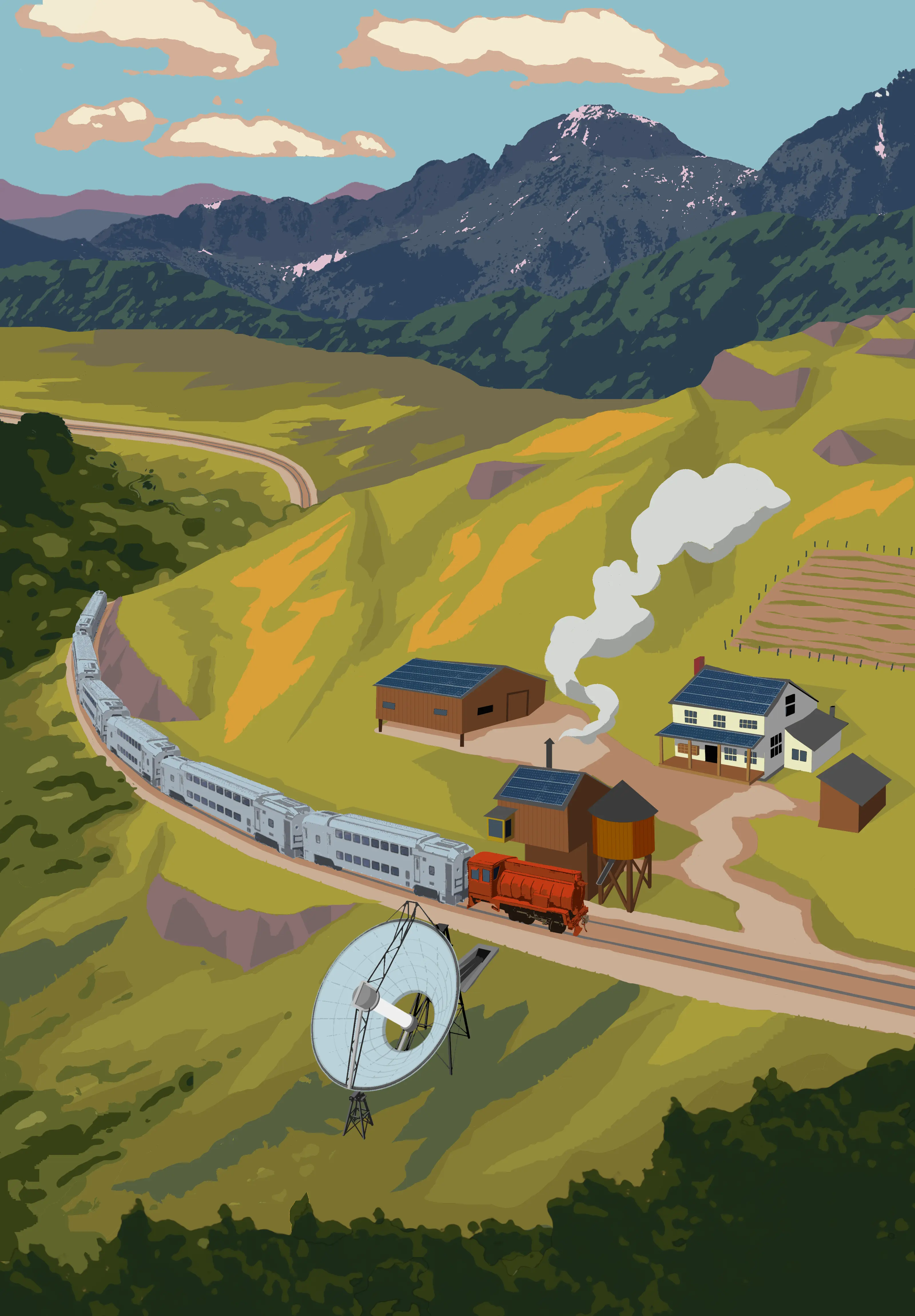
This is really cool! I'd always thought this was done with molten gold, I had no idea that it was mostly done with resins. I might give this a try someday.